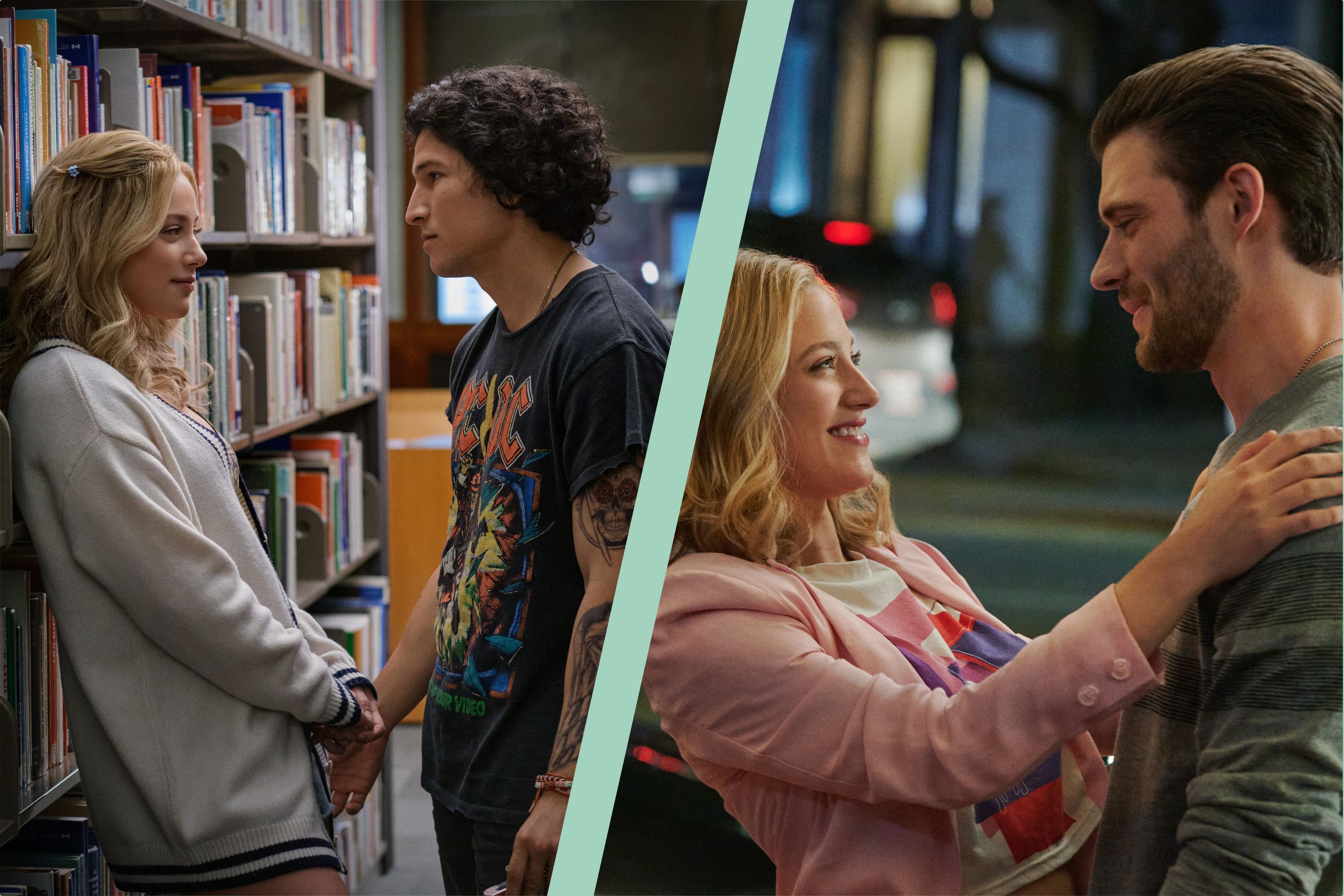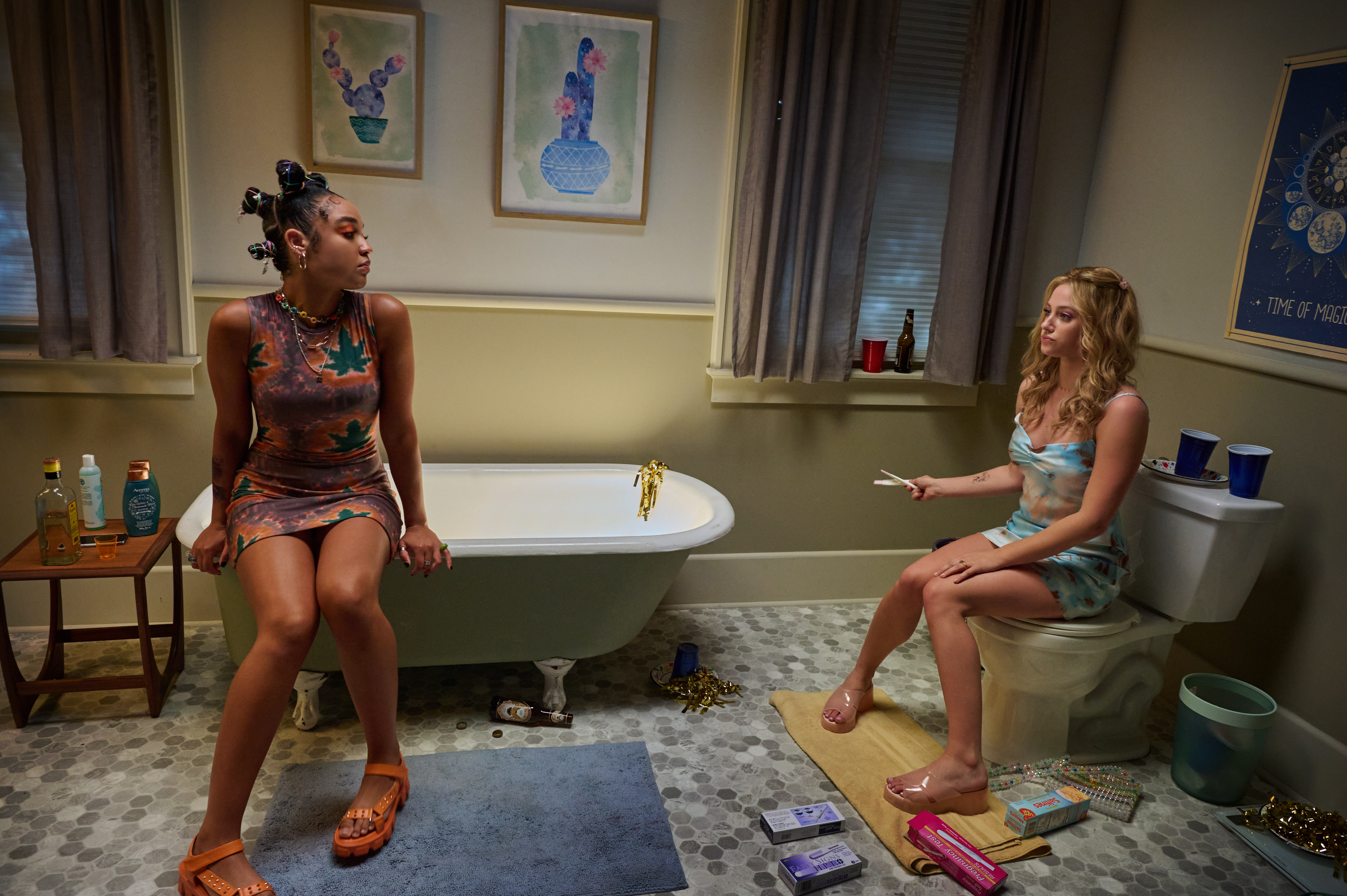Look Both Ways: Ending explained and the 90s movie that inspired the plot
She did look both ways but which reality did Lili Reinhart's character end up in?

Look Both Ways illustrates the endless possibilities that can be found in unexpected plans, reassuring that, by the end, things will work out.
Netflix's latest original film, Look Both Ways, was released on the 17th August and quickly made it to the number one movie spot on the streaming site.
The movie is based on a screenplay by Alison Prosser and is directed by Wanuri Kahiu. Starring Riverdale's Lili Reinhart as the protagonist, Natalie, who has her five-year plan down to a science, viewers are invited in to experience two alternate avenues Natalie's life can take.
On the eve of her college graduation, Natalie has a one night stand with her close friend Gabe, played by Danny Ramirez. After feeling nauseous, she takes a pregnancy test, sending viewers along a path of exploration into two parallel realities - one where the test was negative and one where it was positive.
In the reality when the test is positive, she moves back home with Gabe to live with her parents and raise the child. In the reality where the test is negative, she moves to Los Angeles and begins to execute her five year plan, pursuing a career as an animator and falling in love with along the way.
But the ending left many viewers asking, 'which reality is real?' Read on for the Look Both Ways ending explained.
How does Look Both Ways end? Ending explained
"There's a happy ending here, and there's not one life that's worse or better than the other." The confusing ending of Look Both Ways is purposely ambiguous, showing that either reality could be followed and the protagonist would be ok in both of them.
Parenting advice, hot topics, best buys and family finance tips delivered straight to your inbox.
That is the message of the whole film; that there are multiple paths life can lead you down and, whichever one you take, it can still lead to where you want to be.
Both versions of reality present the protagonist with trials and tribulations, one of which is love. The reality of the negative pregnancy test leaves Natalie with a successful career and a man whom she loves. The reality of the positive test leaves her with a successful career and a man whom she loves, plus a daughter who inspired her career.
At the end of the movie, both realities intertwine as the retrospective couples in their own realities visit Natalie's old University of Texas sorority house, where the infamous scene of taking the pregnancy test occurs. Natalie walks up to the mirror and tells herself she is okay.
Actress Lili Reinhart told Variety that she was attracted to the role because "she loved how there was no wrong path in life for Natalie, and she fell in love with the character."
Reflecting on the film ending, Lili said, "Here's a happy ending, and there's not one life that's worse or better than the other. We wanted people to take away from the film that you have options, and your life doesn't have to look a certain way for you to feel happy."
Did the 90s movie Sliding Doors inspire Look Both Ways?
The premise of Look Both Ways plot is similar to the 1998 romcom Sliding Doors starring Gwyneth Paltrow.
In the 1998 movie, whenever Paltrow caught or missed her tube, she was sent along a journey of parallel timelines, all showing the infinite possibilities that such a small change in routine could open up. Similarly, though simplified, in Look Both Ways, one event sends Natalie down two possible timelines.
Does this mean Sliding Doors inspired Look Both Ways? It is not a definite no, but the writers and producers have made no comment on the subject. The matter of the fact is that any alternate timeline inspired movie made after 1998 will be compared to Sliding Doors. This multiple-timelines framing device has also been used in the Idina Menzel musical If/Then and, more recently, the short-lived NBC drama Ordinary Joe - both of which received comparisons to the Paltrow classic.

Who is Look Both Way's lead Lili Reinhart?
Lili Reinhart is best known for her work on CW's hit teen show Riverdale, playing the not so innocent girl-next-door, Betty Cooper. The 25 year old has starred in the show since it's release in 2013, fitting in movie roles, such as the adorably naive Annabelle in 2019's Hustlers starring Jennifer Lopez, in between the show's scheduling.
Speaking to People, Lili spoke of her developing career and what she sees in her future, ""I have a lot of sort of dramatic, deep roles in my future after Riverdale," she said. "Definitely roles that you have not seen me in - I'm an adult! I'm an adult woman and I'm going to start playing those more adult roles."
A post shared by Lili Reinhart (@lilireinhart)
A photo posted by on
Look Both Ways: Rotten Tomatoes review
Rotten Tomatoes currently has Look Both Ways standing at a 58% critics score, with the audience rating at a similar 59%.
The critics' general consensus is that Look Both ways is a sweet, lighthearted movie with an enduring storyline. "No one will ever confuse Look Both Ways for great cinema, but for an escapist film on your designated movie night, you could do a lot worse," wrote Rotten Tomatoes critic, Alex Bentley.
The film has so far received lukewarm reviews, with people being neither disappointed or blown away. Stephanie Zacharek from TIME Magazine wrote, "Look Both Ways has a mild sweetness that makes it go down easy."
Despite the lacklustre reviews regarding the movie's plot, one thing all the reviewers agree on is that Lilli Reinhart was fantastic in this film. Adrian Horton from The Guardian wrote, "There is a disarming sincerity to Reinhart’s performances; she is never less than believable on-screen, even if the story around her falters."
Charlie Elizabeth Culverhouse is a news writer for Goodtoknow, specialising in family content. She began her freelance journalism career after graduating from Nottingham Trent University with an MA in Magazine Journalism, receiving an NCTJ diploma, and earning a First Class BA (Hons) in Journalism at the British and Irish Modern Music Institute. She has also worked with BBC Good Food and The Independent.